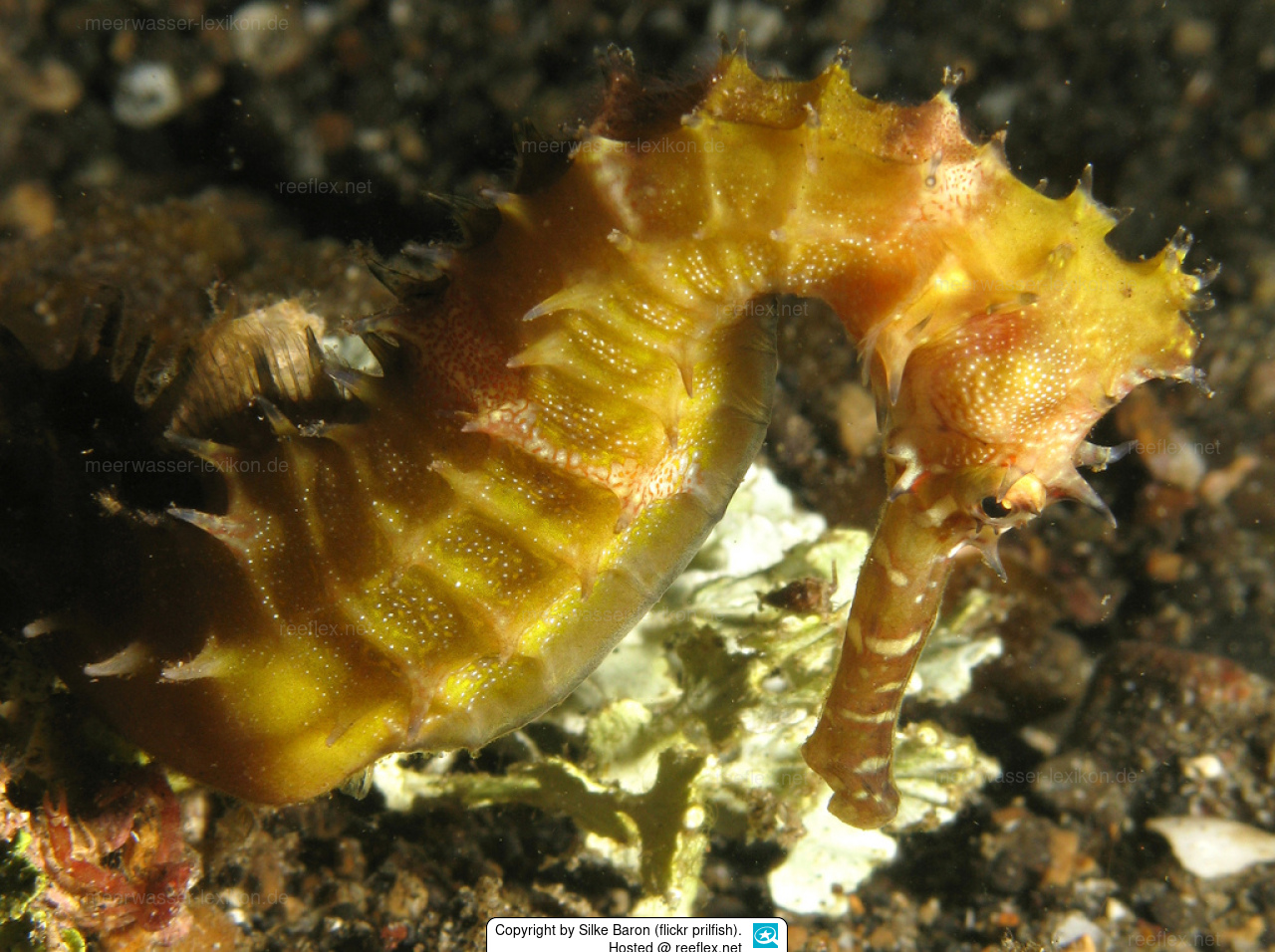Info
A rare inhabitant of shallow sheltered reefs, found among clumps of algae or in seagrass beds. Large adult pelagic and probably associated with drifting debris.
Associated with sponges and sea-squirts.
Ovoviviparous.
The male carries the eggs in a brood pouch which is found under the tail. Use in traditional Chinese medicine is increasing with the rise in patent medicines.
Not common in the aquarium trade.
Synonyms:
Hippocamphus hystrix Kaup, 1856 (misspelling)
Hippocampus hystrix Kaup, 1856 (misspelling
Feeding intake.
The fish take a long time to eat at the beginning, before the food is taken up, a close inspection is carried out. After acclimatisation, the offered frozen food is eaten without problems. It should be noted that wild-caught fish behave differently than offspring when it comes to food intake. In the case of offspring, the size of the fish purchased also plays a role in the choice of food.
You can download the minimum requirements for keeping seahorses (in accordance with EC Regulation 338/97) from the Federal Agency for Nature Conservation as a PDF here: https://meerwasser-lexikon.de/downloads/BfN_Mindestanforderung_haltung_seepferdchen_hippocampus.pdf







 Silke Baron (flickr prilfish), Austria
Silke Baron (flickr prilfish), Austria






























































